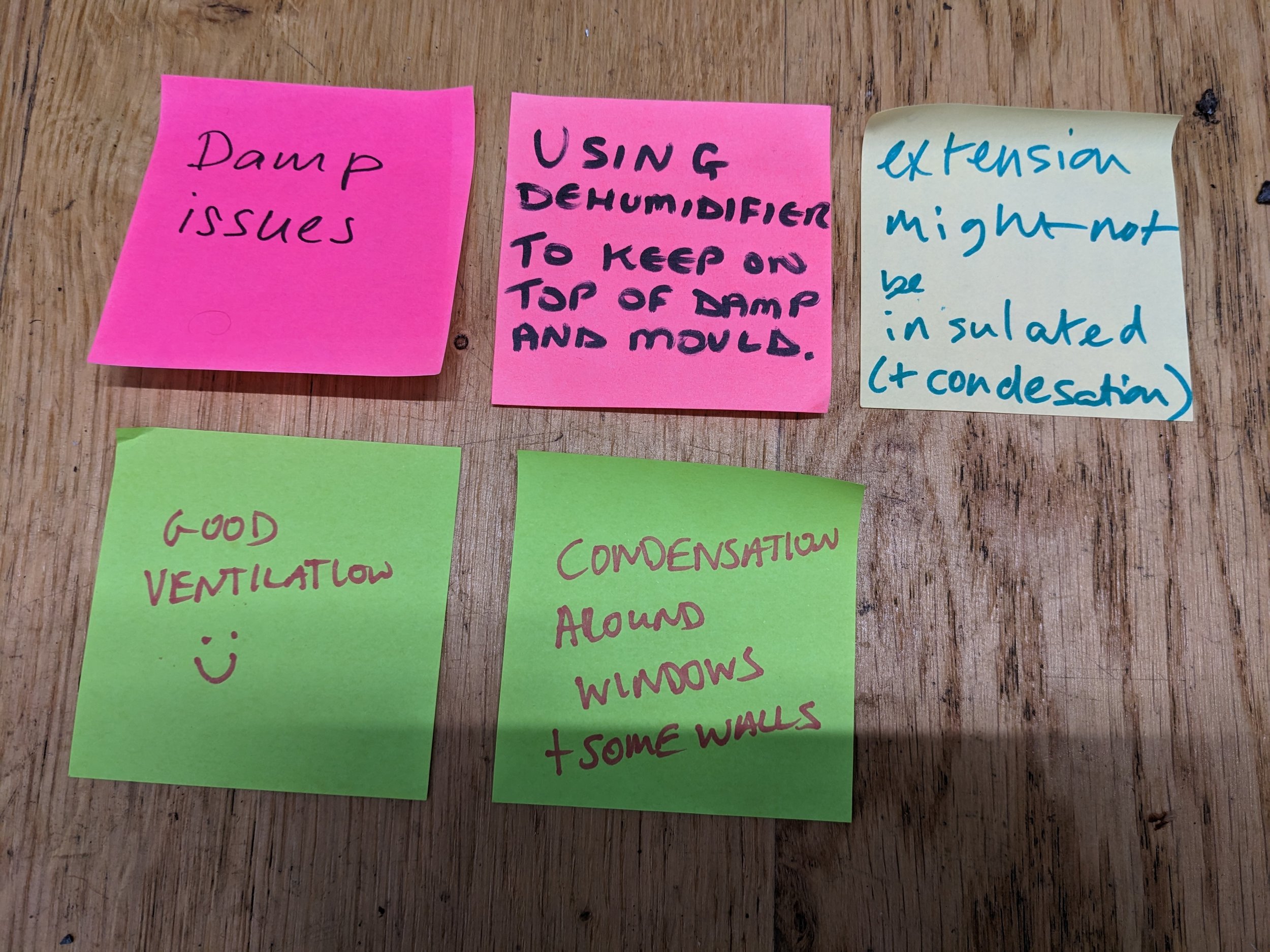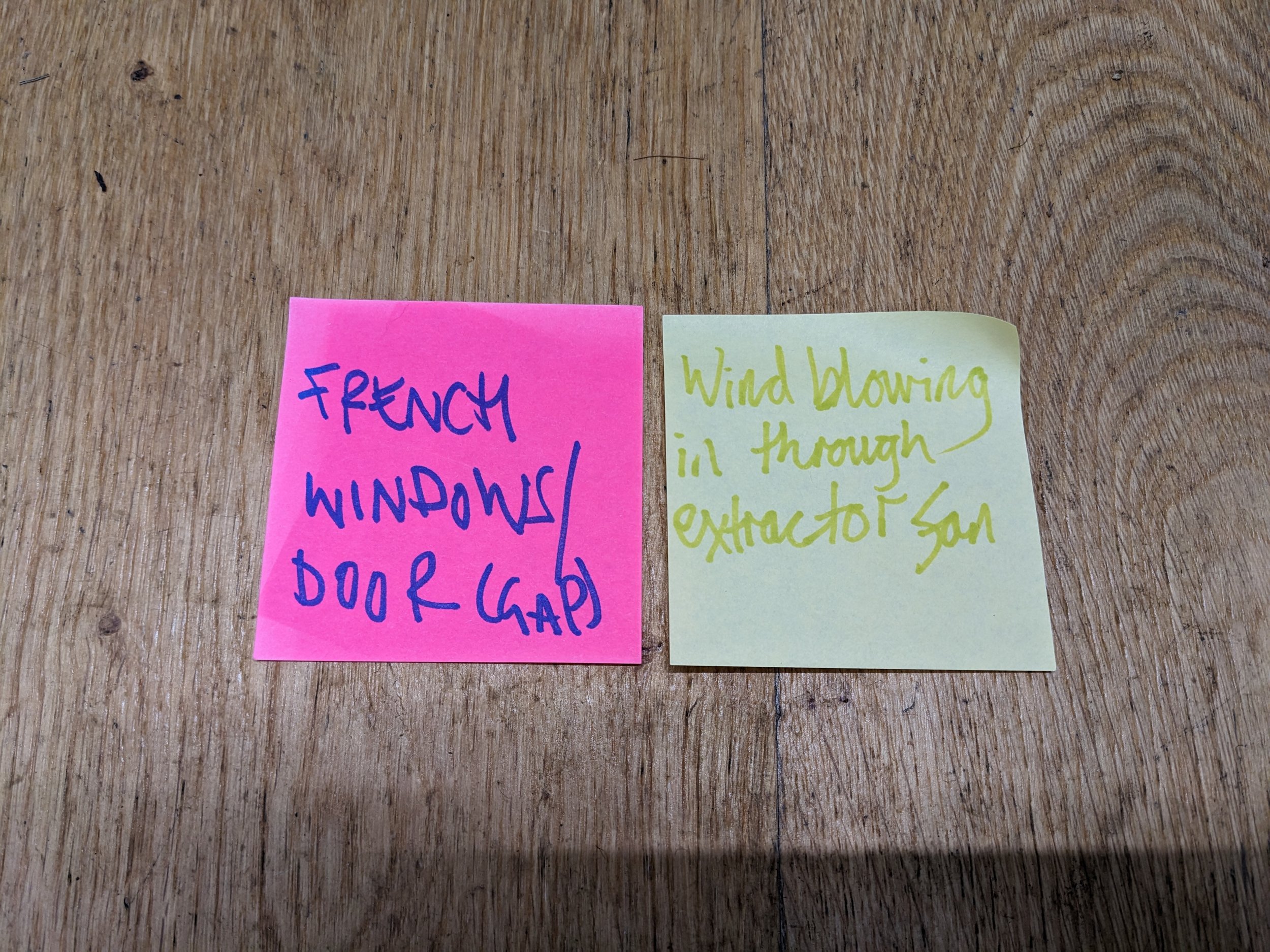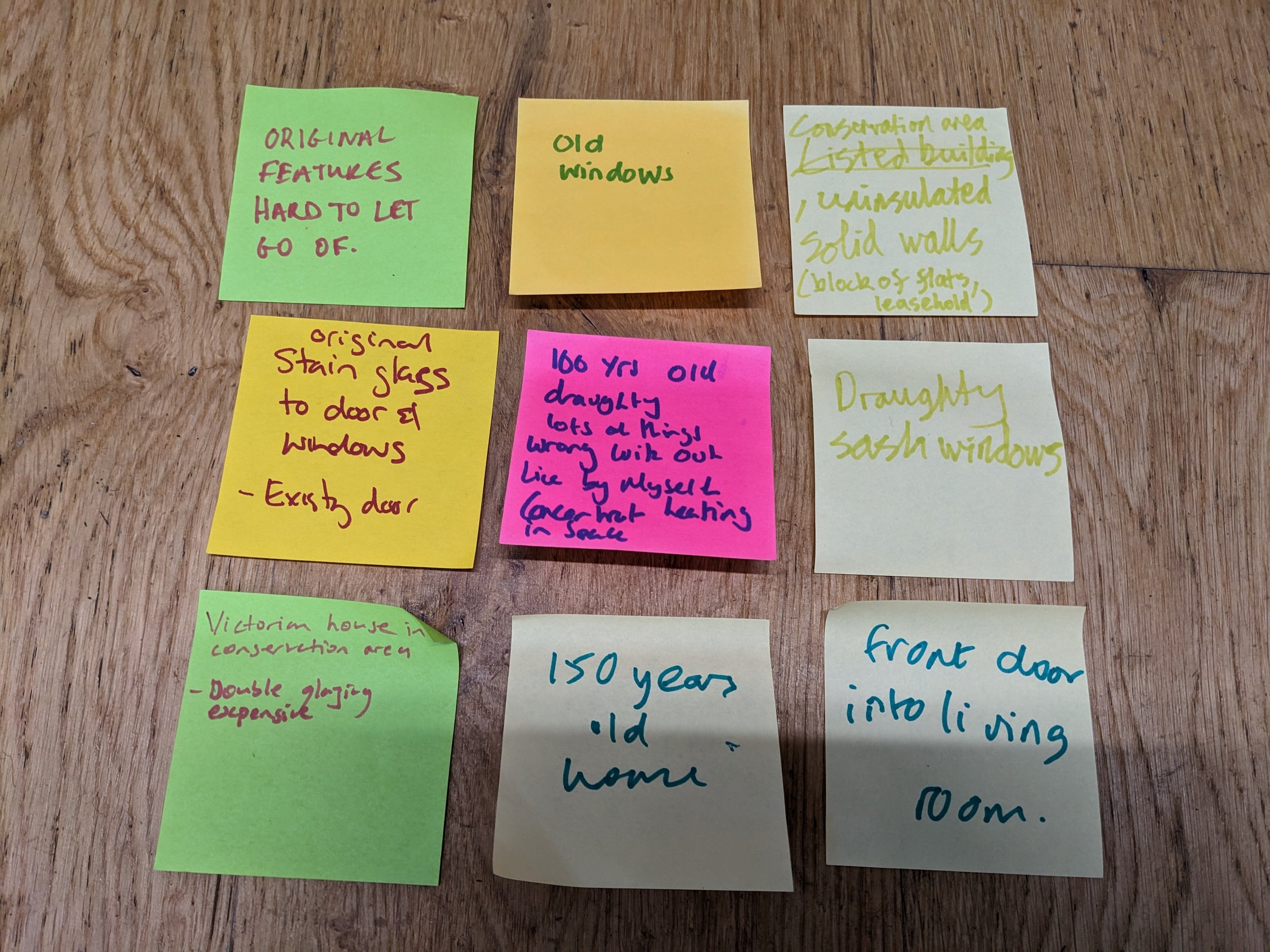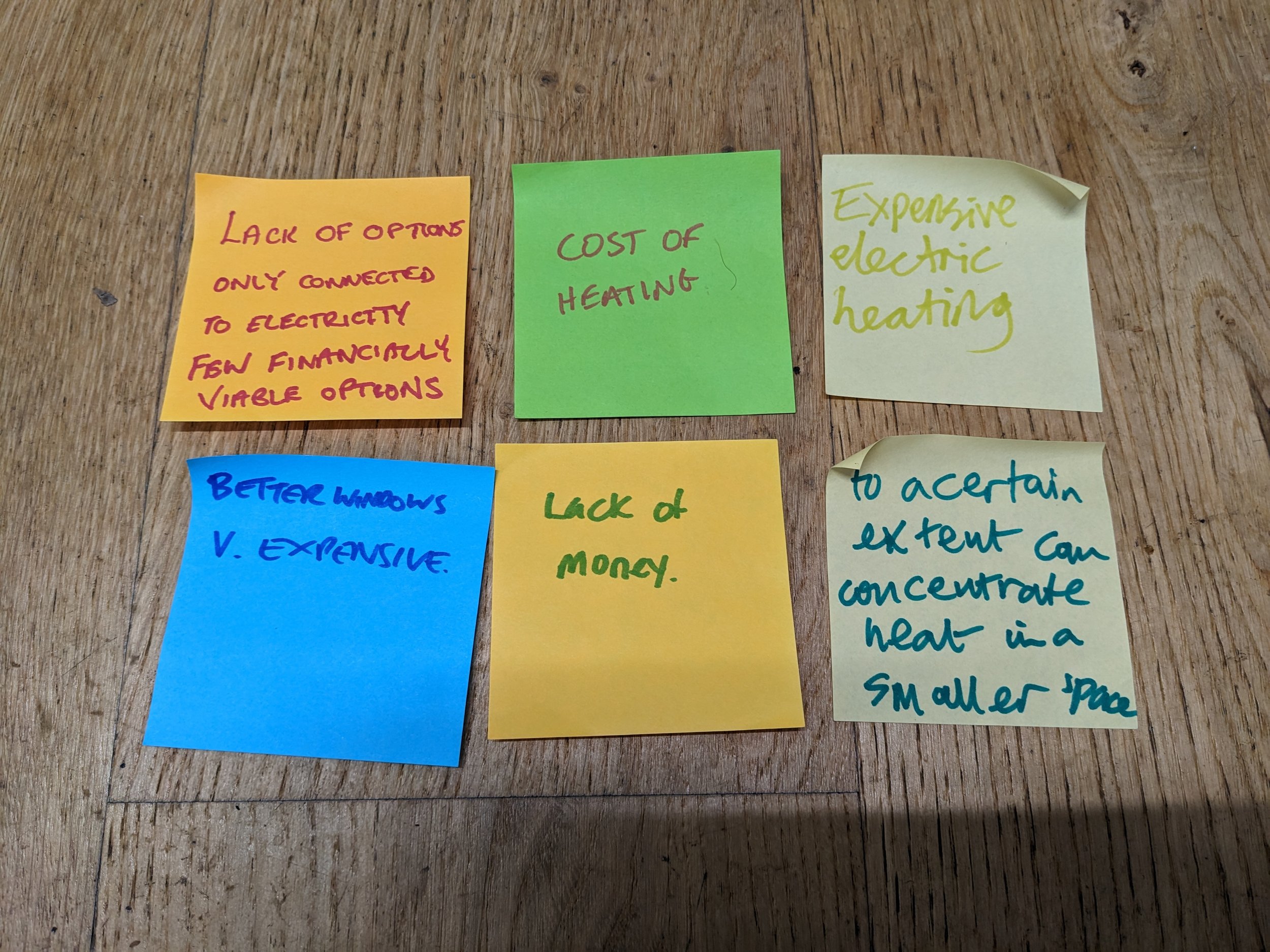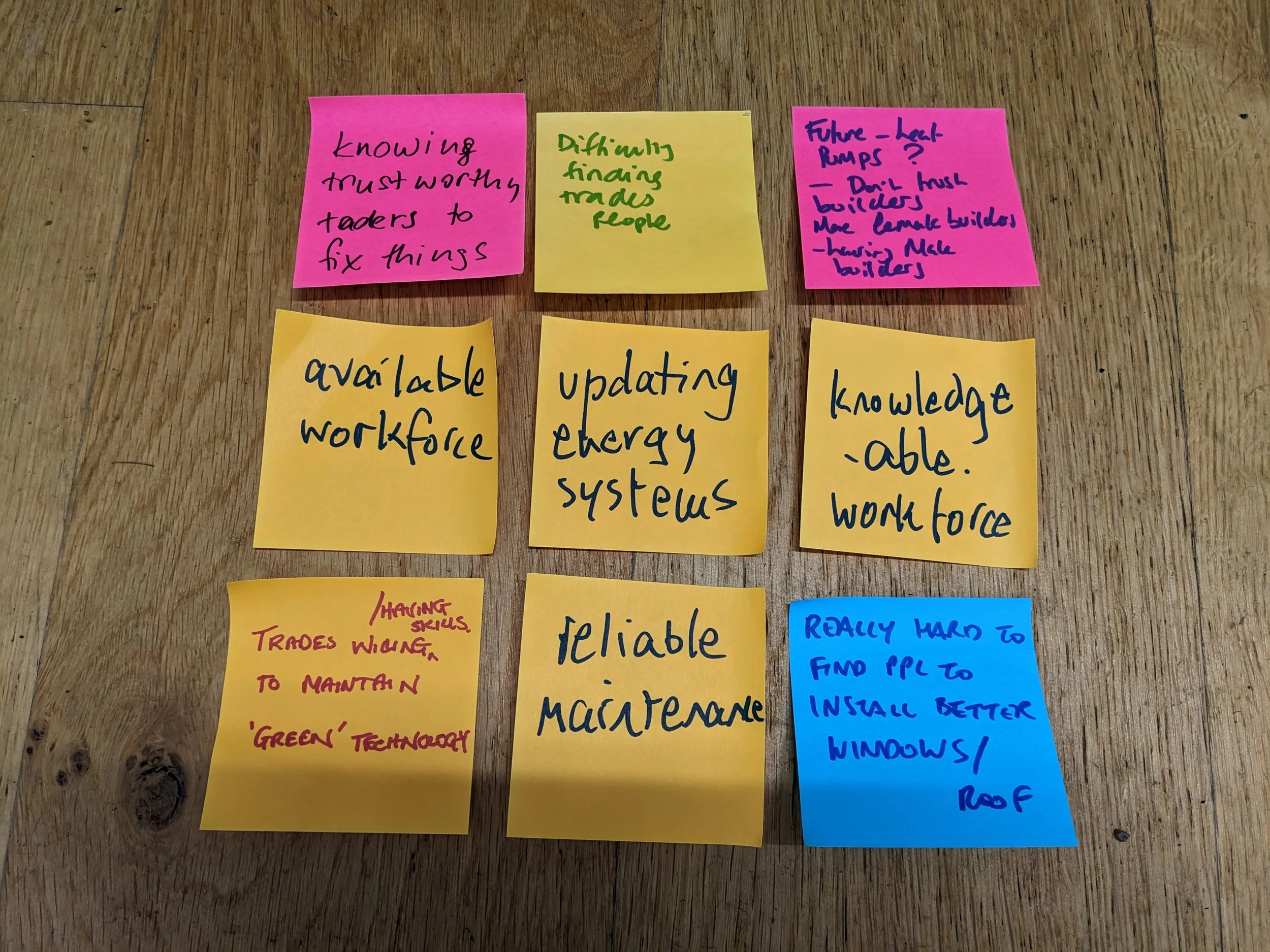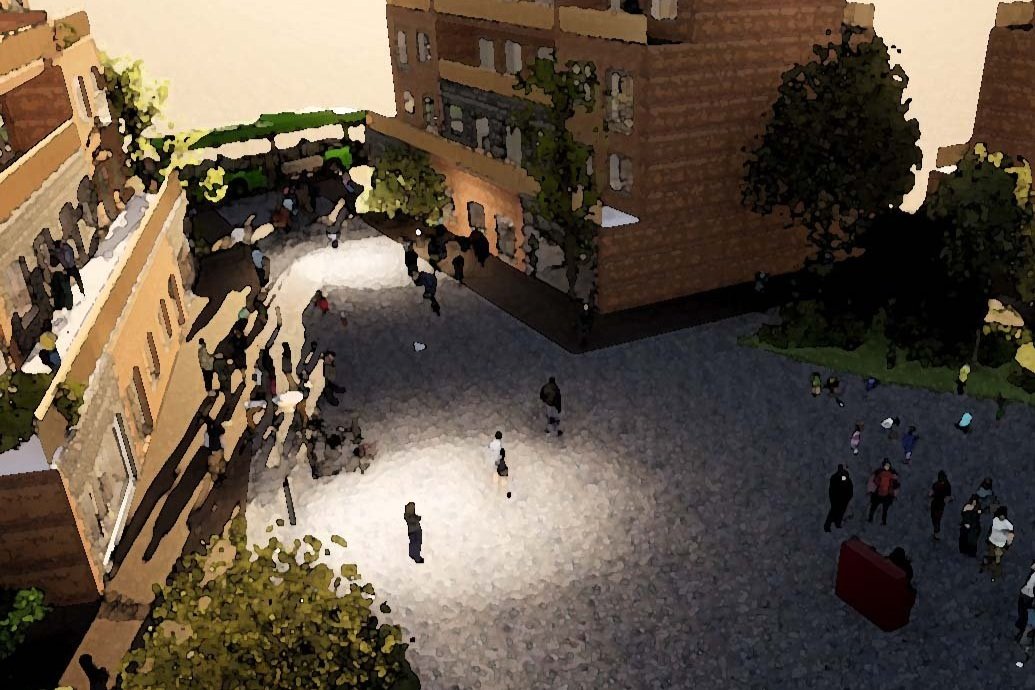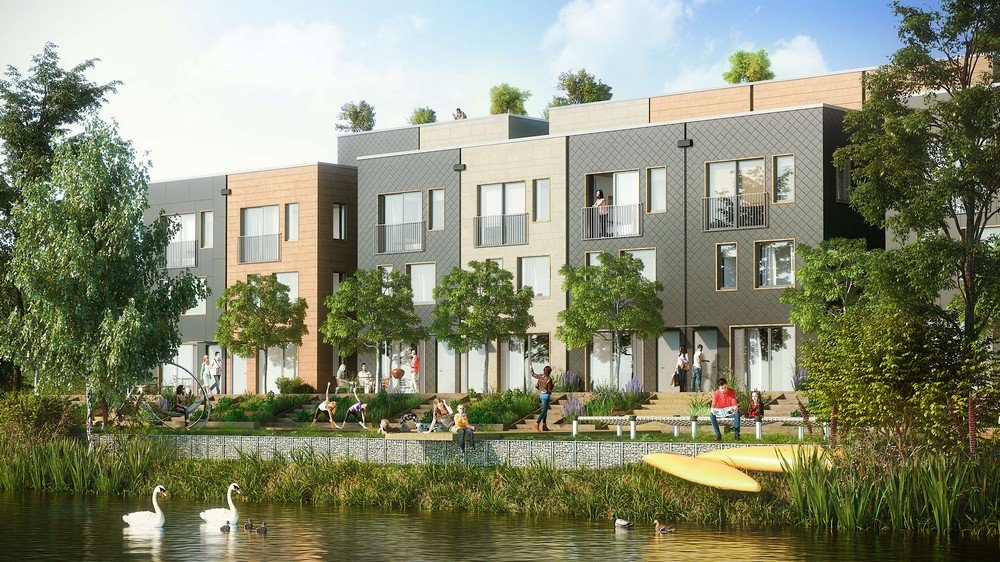Warm Homes - now and in the future
Our January Open Meeting looked at home energy and retrofit from a YoCo standpoint – thinking both of the existing communities around the site and the potential new buildings which will be there.
What can we all do right now to make our own homes more comfortable and more affordable to heat?
What are the processes and skills involved and how might we explore beyond what we can individually do, to think about the kind of jobs which home energy and retrofit might create?
And how might this point to the sort of homes which should be built on York Central, and who builds them?
We started by talking about our own homes – what are the challenges to keeping warm and comfortable – these were the responses and discussion…
Damp:-
First:- where’s it from? Rising damp from the ground due to lack of damp proof course is a specific issue which requires more intrusive measures to cure. Often though damp is from condensation; warm(er) air carries more moisture, and this condenses when it hits cold surfaces. These will often be colder corners of rooms (where insulation is particularly poor, or where indoor air simply sits adjacent to multiple external walls and everything cools down). It’ll often be the top of walls as this is where warmer, and hence moister, air sits. Windows and their frames will also be likely places due to being cold. What can you do?
Try to reduce moisture in the air:- close the bathroom door when showering or bathing and ensure extracts fans are working as they should.
Reduce moisture from cooking by putting lids on pans and using the extract hood if you have one.
Don’t dry clothes all over the house – pick a room, close the door and occasionally open the window to get rid of moisture. Plus use the spin setting on your washing machine to get clothes as dry as possible beforehand.
And a German tip from Rich Lane – which The Guardian helpfully explains:- “Impact ventilation, or Stosslüften, which needs explanation for most people unfamiliar with Germany except for experts in air hygiene, involves widely opening a window in the morning and evening for at least five minutes to allow the air to circulate. Even more efficient is Querlüften, or cross ventilation, whereby all the windows in a house or apartment are opened letting stale air flow out and fresh air come in.”
Dodgy windows and doors:-
Many people talked about problems with draughty and single-glazed windows and external doors. Having a Listed Building really restricts possibilities; Conservation Areas have restrictions but these are generally less onerous. Simple things you can do:-
DIY “double glazing” comes in various shades of cost and durability – simplest is heat-shrink film applied inside the windows and tightened with a hairdryer; unlikely to last long but can bring short-term benefits. DIY rigid (plastic or glass with plastic edging, screwed in place) secondary glazing is better than nothing (but not as good as proper multiple-glazing).
Sealing draughts can make a big difference – buy proper flexible self-adhesive seals rather than simple foam strip – brush or strip seals for sliding edges, D- or P-shaded seals for compression edges. Search the internet.
The next step up in cost is getting windows serviced properly – there are specialists out there who can repair/service/draught-strip sash windows (we used this company years back on our Listed Building windows). Next step beyond that is replacing the windows / doors. Green Building Store do very high quality triple-glazed replacements - but they’re not cheap.
Note that it can be worth replacing individual units where they have a big impact – French doors right next to where you sit in your living room are more immediately important than the spare bedroom window, for example.
“Original Features”
There were many specific issues around the lovely bits of Victorian and similar homes which make them attractive, but can be problematic. Sash windows have been mentioned above. Draughty suspended timber floors – there are twin issues of cold (due to air necessarily circulating to keep joists dry) and draughts (due to some of it coming up between the joists). Both can be addressed by lifting the boards, insulating between the joists and then re-boarding, but this is a disruptive job where you might need technical input (York Community Energy have run “housewarming parties” in the past to bring groups together to share knowledge and labour).
Sometimes it’s best to put things in context though – that lovely tiled floor in your Victorian hallway is probably only losing part of one percent of the heat – and how much time do you spend in the hall?
The cost of electric heating:-
For those who only have electricity things are Not Good at the moment – electricity costs about three times as much as gas (largely because of cost of subsidies being loaded onto electricity rather than gas – counterintuitive when we’re being encouraged to move away from fossil fuels). The price of electricity is pegged to the price of gas; at some point this will change (especially as the proportion of electricity from renewables continues to increase) but at present this is, as George explained, because a substantial part of our electricity comes from gas (you can find out how much via a carbon-tracking app such as Electricity Maps).
Meantime, target electric heating to heat yourself rather than the space and building – infra-red panel heating can be effective for this (try City Screen bar for the experience) or panel heaters / convectors where / when you specifically need them. Be aware though that if the rest of your home gets *too* cold, that’s not good for the building fabric (see “Damp” above).
Beyond DIY:-
Ivana talked about the services offered by York Community Energy – particularly their Home Energy Check-up and more comprehensive Whole House Assessment. They can use thermal imaging and bring to bear years of experience to suggest quick wins and small improvements, and the Whole House Assessment will give you a road-map for improvements which can be phased. A key thing in doing partial improvements is to ensure they’re “no regrets” work – you don’t want to have to undo phase one if you later do phase two. In the absence of an overall adequate budget, it’s important to do part of the work well rather than all the work to a poor standard. YCE have equipment they can loan to enable you to understand how your home is working – talk to them!
Lastly we ventured into the issue of how to find good builders and tradespeople – many people have had bad experiences. Ivana noted that YCE was starting to build a list of people – currently a short list (and not extensively vetted – just broadly good reports) and this would be developed, but very much relied on changes in the industry. We need more builders, which means more training and accreditation, which means more attention on the part of government, council, colleges etc.
Final words on warm homes for the present day:-
Do keep your eye open for the YCE / St.Nicks Open Eco Homes events – a chance to see what other people have done to improve their homes’ comfort and warmth
Take a look at the videos of past York Environment Week events (and indeed get involved with York Environment Forum!) – for example George talks through his comprehensive retrofit here as part of thinking about what you need to know before you buy a new home.
So, what does all of this say about the homes we build on York Central?
Much of the output of big housebuilders at present falls way below the “zero carbon” levels we will want as we transition from fossil fuels. Current UK Building Regulations allow relatively poor building performance in return for adding renewables – the image of pouring water faster into a leaky bucket springs to mind. Coupled with that, lax enforcement means that the actual performance of buildings is often far below even the predictions of the designers – what we call “the performance gap”. We need to do better on York Central – if the council are building new homes to Passivhaus standard (which has both higher performance and more rigorous quality assurance) then why would York Central be built to poorer standards?
There are also broader considerations – building individual houses surrounded by gardens, where everything the occupants need is a car drive way, is not a sustainable future. Evidence is increasingly mounting in favour of fifteen-minute or twenty-minute neighbourhoods – places where work, shops and services, and places to learn, meet and play are all within walking distance. This is the sort of mixed-use development that YoCo’s community plan for York Central proposes.
But is this just idealism? Well, no – it’s already happening not far away with Citu’s development of Leeds Climate Innovation District, and broader work that Leeds Community Homes / People Powered Homes are doing to create community-led housing. We re-ran a presentation which Citu did at YoCo’s launch event a few years back – looking at how they are making:-
Thoughtfully-designed contemporary timber-framed homes, built to Passivhaus standard in a local factory to high standards of quality, and innovating with new approaches to training, apprenticeships and skills
Creating car-free environments by burying limited parking beneath buildings and public space, and creating usable, attractive shared space all around the buildings. High density is further enabled by using roofs for private terraces – ground level gardens are minimal.
Building communities by connecting with the surrounding city, and acknowledging the way we live and work with flexible homes that include workspace.
YoCo has been meeting and talking with potential partners in the York Central development – with Citu and innovative development consultants TOWN, with potential master developers for the whole site, and with Homes England and the council. We’ve had discussions with groups who are doing similarly bold stuff across the country – from Bradford’s People’s Property Portfolio, to the wonderful Homebaked CLT in Anfield, and the pioneering Mayday Saxonvale project in Frome.
If you want to help make good stuff happen then get involved – join YoCo and become part of making this future place better.

